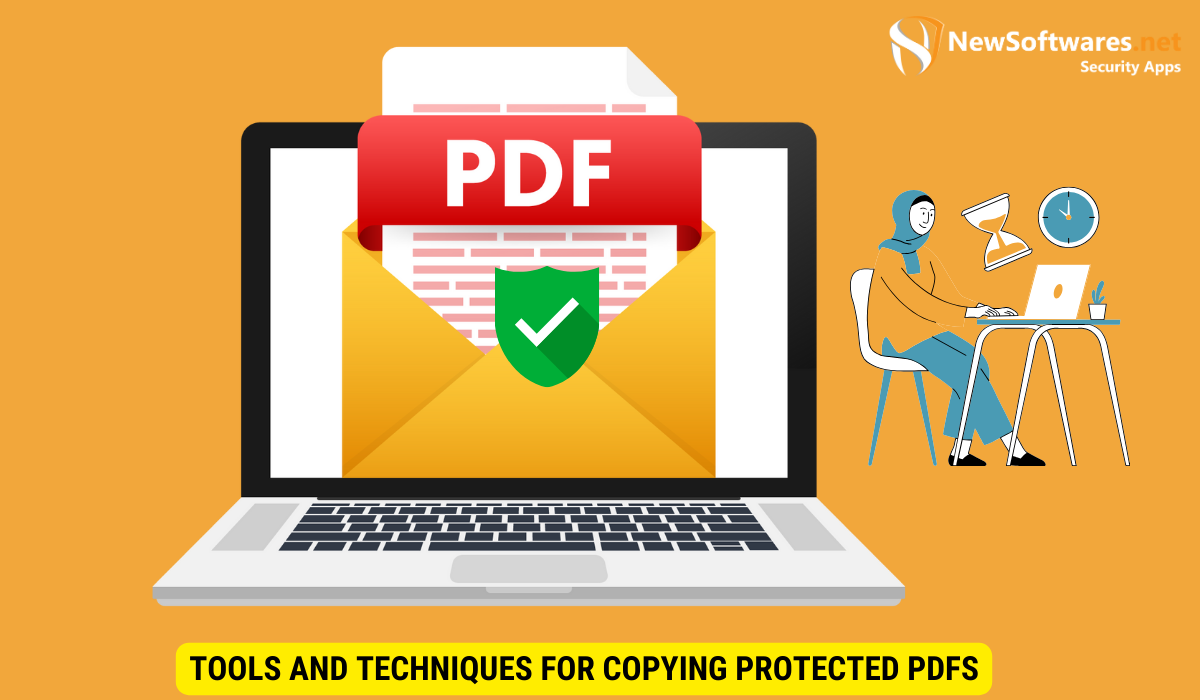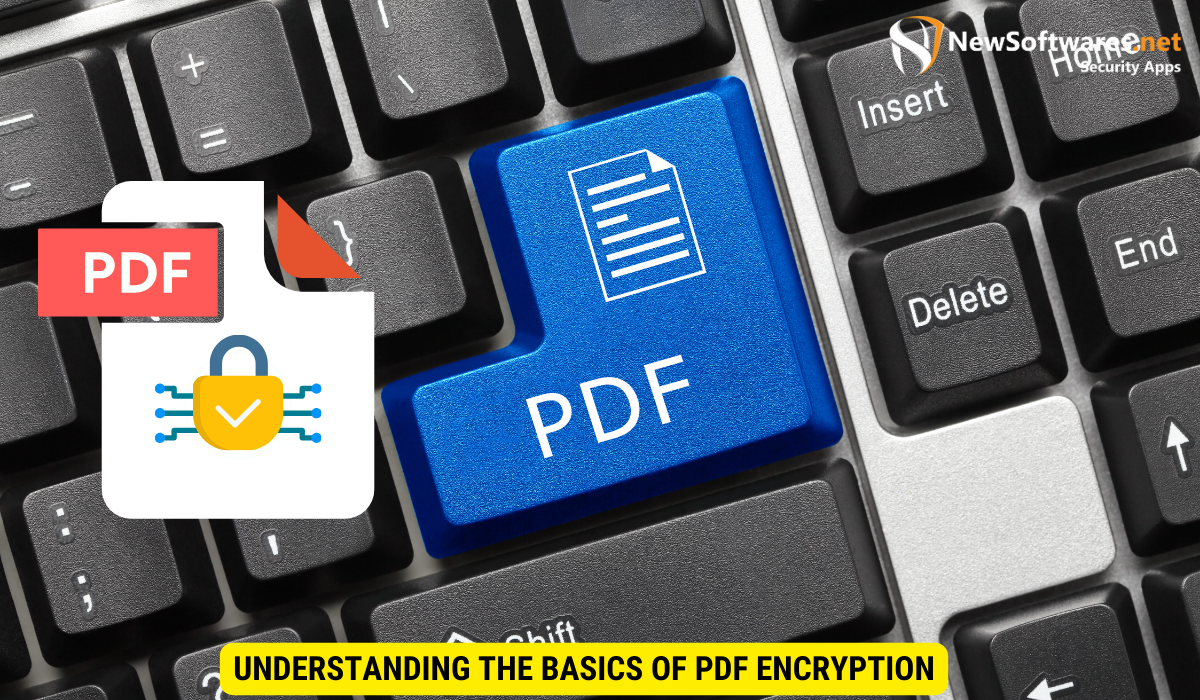Copying password-protected PDFs involves decryption methods that may have legal and ethical implications. Instead, focus on securing your own PDF files with strong encryption techniques.
Understanding the Basics of PDF Encryption
PDF files are widely used for their compatibility and ease of sharing. However, many PDFs are password protected to prevent unauthorized access. Understanding how PDF encryption works is crucial if you need to bypass these protections.
PDF encryption serves as a vital security measure in the digital world, especially when sensitive information needs to be transmitted securely. By employing encryption, PDF files are shielded from prying eyes and unauthorized users, ensuring that only those with the proper authorization can access the content.
What is PDF Encryption?
PDF encryption is a security feature that adds a layer of protection to your files. It scrambles the content using complex algorithms, making it difficult for unauthorized users to view or copy the data. Encryption ensures that only those with the correct password can access the file.
Furthermore, PDF encryption can come in different levels of strength, ranging from basic password protection to more advanced encryption methods like public key infrastructure (PKI) or digital signatures. These advanced techniques provide an extra level of security, making it even more challenging for malicious actors to compromise the integrity of the PDF file.
The Role of Passwords in PDF Protection
Passwords play a pivotal role in securing PDF files. They act as the key that unlocks the encrypted content. Without the correct password, it is virtually impossible to gain access to the protected PDF. However, passwords alone may not always be enough to entirely safeguard your files.
It is essential to choose strong and unique passwords when encrypting PDF files to enhance their security. Additionally, implementing multifactor authentication or using digital certificates can further fortify the protection of sensitive PDF documents, ensuring that only authorized individuals can decrypt and access the content.
The Legal and Ethical Implications of Copying Protected PDFs
Before diving into the techniques of copying password protected PDFs, it’s crucial to consider the legal and ethical implications surrounding this practice.
Understanding the legal landscape surrounding the bypassing of PDF protection is essential to avoid potential legal repercussions. Laws regarding copyright and digital rights management vary across different countries and regions. It’s important to be aware of the specific regulations in your jurisdiction to ensure compliance with the law.
When is it Legal to Bypass PDF Protection?
The legality of bypassing PDF protection depends on various factors, such as your jurisdiction and the purpose for which you are accessing the file. In some cases, it may be permissible to access protected PDFs for personal use or under specific circumstances, such as fair use.
Additionally, certain countries have exceptions in their copyright laws that allow for the circumvention of technological protection measures under specific conditions. These exceptions are typically limited and may require meeting certain criteria to qualify for legal bypassing of PDF protection.
Ethical Considerations in PDF Copying
Even if something is legally permissible, it doesn’t necessarily make it ethical. As with any technology, it’s essential to consider the moral implications of copying protected PDFs. Respect for intellectual property rights and honoring the intent of the content creators should always be taken into account.
Furthermore, ethical considerations extend to the potential consequences of bypassing PDF protection. Unauthorized copying of protected PDFs can undermine the incentives for creators to produce valuable content and may lead to financial losses for content creators and rights holders. Considering the broader impact of your actions on the creative ecosystem is crucial in making ethical decisions regarding PDF copying.
Tools and Techniques for Copying Protected PDFs

While we explore the various methods of copying password protected PDFs, it’s important to note that these techniques should only be used in legal and ethical ways.
When dealing with protected PDFs, it’s essential to understand the reasons behind their encryption. PDF encryption is commonly used to safeguard sensitive information, such as financial reports, legal documents, or personal data. By attempting to bypass these security measures, one must consider the potential consequences of unauthorized access to such confidential content.
Software Solutions for PDF Decryption
Several software solutions are available that claim to crack the encryption on password protected PDFs. However, caution is advised when using such tools, as they may potentially violate copyright laws or compromise the integrity of the files. It’s always best to seek legal alternatives.
Moreover, the effectiveness of software-based decryption tools can vary depending on the complexity of the encryption algorithm used in the PDF file. While some tools may claim to offer quick and easy decryption, others may require significant computational resources and time to break through the security measures.
Manual Techniques for Copying Protected PDFs
In some cases, manual techniques can be used to copy the content of password protected PDFs. These methods may include printing the file and then scanning it or using copy-paste functions selectively. However, these techniques are time-consuming and can often result in a loss of quality.
Additionally, manual copying methods may not be suitable for PDFs with complex layouts or embedded multimedia elements. In such cases, the copied content may lose its original formatting, making it challenging to interpret or use effectively. It’s crucial to weigh the trade-offs between convenience and quality when opting for manual copying techniques.
Ensuring the Quality of Copied PDFs
Copying password protected PDFs can sometimes result in a loss of quality and integrity. It’s crucial to take steps to avoid common pitfalls and maintain the original quality of the file.
Maintaining the Integrity of Copied Content
When copying the content of password protected PDFs, it’s important to ensure that the integrity and accuracy of the content are preserved. Care must be taken to avoid any unintentional modifications or errors.
Avoiding Common Pitfalls in PDF Copying
Copying password protected PDFs can be a tricky process, often involving complex software or manual techniques. It’s important to be aware of common pitfalls, such as loss of formatting, resolution, or missing content. Regularly quality-checking the copied PDFs is essential to avoid these issues.
Strengthening Your PDF Protection
While it may be tempting to seek ways to copy password protected PDFs, it’s equally important to focus on strengthening the security of your own PDF files.
Advanced Encryption Techniques
Exploring advanced encryption techniques can help safeguard your PDF files from unauthorized access. Encryption algorithms, such as AES-256, offer a robust level of security and are widely used for PDF protection.
Best Practices for PDF Password Protection
Implementing strong passwords, regularly updating them, and using additional security measures, such as digital signatures, can significantly enhance the protection of your PDF files. Following best practices and staying updated with the latest security trends is crucial for maintaining the integrity of your files.
Key Takeaways
- PDF encryption adds a layer of security to files by scrambling the content.
- Passwords play a crucial role in unlocking protected PDFs, but they may not always be foolproof.
- Copying password protected PDFs can have legal and ethical implications, so it’s important to tread carefully.
- Software solutions and manual techniques exist for copying protected PDFs, but they should be used responsibly.
- Maintaining the quality and integrity of copied PDFs is essential, and measures should be taken to avoid common pitfalls.
- Strengthening the security of your PDF files through advanced encryption techniques and best practices is a proactive approach.
FAQs
Q: Is it legal to copy password protected PDFs?
A: The legality of copying password protected PDFs depends on various factors, including your jurisdiction and the purpose for which you are accessing the file. It’s best to consult legal professionals or seek authorized alternatives.
Q: Are software solutions for PDF decryption safe to use?
A: While some software solutions claim to decrypt password protected PDFs, caution is advised. Using such tools may potentially infringe on copyright laws or compromise the integrity of the files.
Q: How can I maintain the quality of copied PDFs?
A: To maintain the quality of copied PDFs, it’s important to regularly quality-check the files for any modifications or missing content. Using reliable techniques and taking caution during the copying process can help preserve the integrity of the content.
Q: What are some best practices for PDF password protection?
A: Implementing strong passwords, regularly updating them, and utilizing additional security measures, such as digital signatures, are some best practices for PDF password protection. Keeping up with the latest security trends is also crucial for maintaining the integrity of your files.
Q: Why should I focus on securing my own PDF files instead of copying protected PDFs?
A: Focusing on securing your own PDF files ensures the protection of sensitive information and respects the intellectual property rights of others. Prioritizing integrity and considering the legal and ethical implications of copying protected PDFs are important aspects of responsible digital behavior.
Conclusion
Copying password protected PDFs may seem tempting to some, but it is important to consider the legal and ethical implications before attempting to do so. Instead, focusing on securing your own PDF files and implementing strong encryption techniques is key to protecting sensitive information. Always prioritize the integrity and respect for intellectual property rights.

